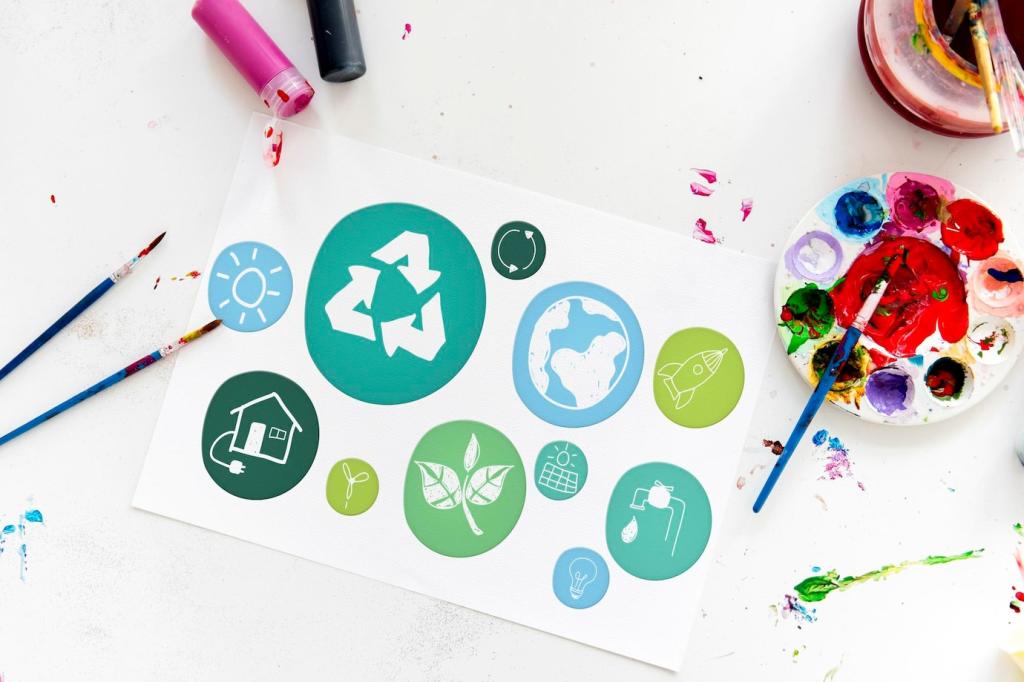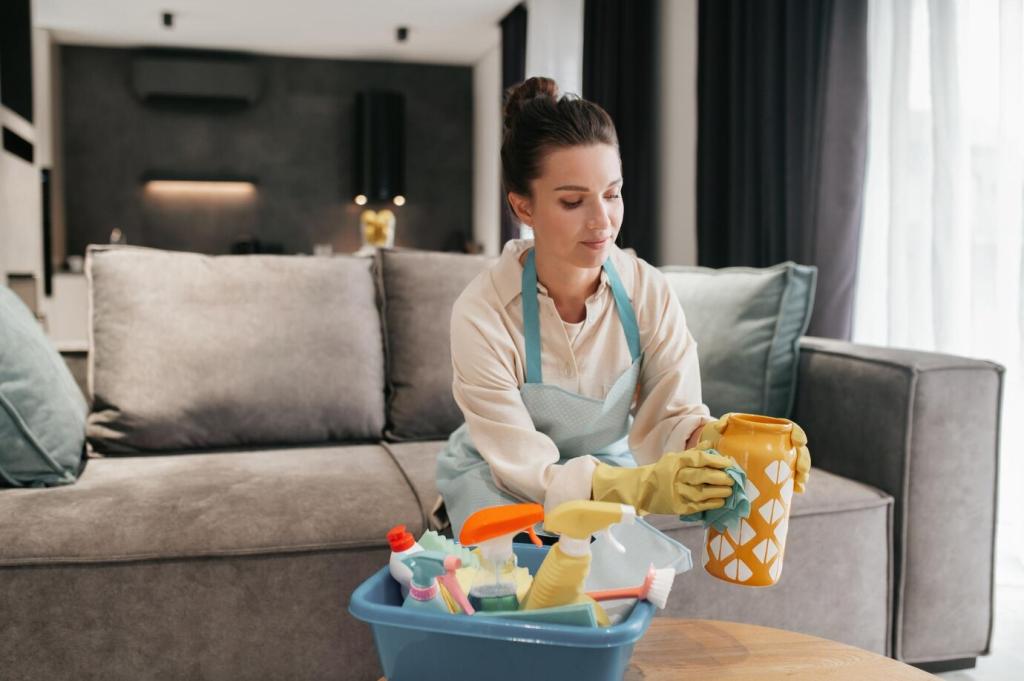Know Your Metals and Finishes
Powder-coated frames, brushed stainless, and lacquered brass all respond differently to cleaners. Gentle, pH-neutral solutions and soft cloths preserve coatings, preventing premature refinishing, saving resources, and keeping your routine minimal yet remarkably effective over the long term.
Know Your Metals and Finishes
Harsh abrasives, needless polishes, and over-application of products shorten finish life and force replacements. Skip steel wool on coatings, avoid bleach mixes, and use measured dilutions to clean effectively without wasteful rinsing, repeated applications, or needless packaging consumption.



